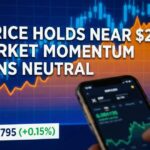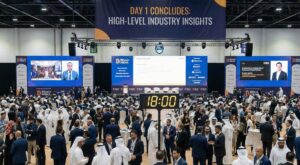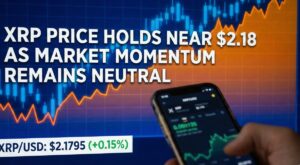The proliferation of blockchain technology has allowed the development of trustless and transparent decentralized financial systems that do away with the need for mediators. If you have been keeping up with DeFi, some of the trends below can give you a deeper understanding that will help you develop more informed investment strategies. In this article, we delve into the trends and prospects of DeFi from 2022 to 2024.
The Transformative Potential of Decentralized Finance
Last year, certain DeFi trends proved unfavorable for the crypto markets. The market value experienced a substantial drop of more than 50% after the bullish trend observed in 2021. At the beginning of 2022, the world of traditional finance had to deal with high-interest rates. In 2021, many more investors were trying out speculative investments in cryptocurrency. This was especially true after bitcoin (BTC) and ether (ETH) rose to unprecedented levels. Also, due to a rise in interest rates, the traditional finance market became less liquid in the second quarter of 2022. As traders sold off their higher-risk assets, the market price of cryptocurrencies fell by $1 trillion.
Defi Trends Of 2023
- Blockchain gaming has emerged as a means to monetize the gaming industry. With billions of gamers worldwide spending billions of dollars annually, developers are looking for new methods to profit from this industry. Blockchain gaming is the practice of operating games on a blockchain rather than a central server, allowing players to mine tokens through in-game tasks. Popular DeFi protocols will be necessary to support in-game transfers. Also, owners of game-based cryptocurrencies are likely to explore chances to earn returns on their investments.
- The rapid expansion of the DeFi ecosystem led to a fundamental issue: increased transaction prices, most notably the rising Ethereum gas fees. Gas fees are the costs of completing a transaction on the Ethereum blockchain, determined by the supply and demand for processing power. Also, the flood of new users led to Ethereum network congestion, delaying the entire system. To address this issue, numerous crypto projects are implementing cross-chain capabilities, allowing transactions and smart contracts to run across several blockchains. Interoperability, provided by projects such as Polkadot, aims to increase scalability for DeFi platforms beyond the Ethereum network’s limits.
- Recently, there has been a noticeable increase in the number of DeFi platforms introducing their governance tokens. These tokens function differently from native tokens, as they grant voting authority to individuals who possess them within decentralized autonomous organizations (DAOs). Investors can use these social tokens to have control over the development of the Defi protocol on their platform as time goes on. As the number of individuals holding governance tokens increases, the value of these tokens also grows.
Conclusion
Naturally, although the decentralized finance sector may encounter risks and challenges; however, the opportunities it presents outweigh the drawbacks. DeFi will probably establish a presence within the traditional financial market in the future. However, it is worth noting that the decentralized finance market currently boasts numerous outstanding projects that are sure to leave a lasting impact on the history of the digital economy.




























